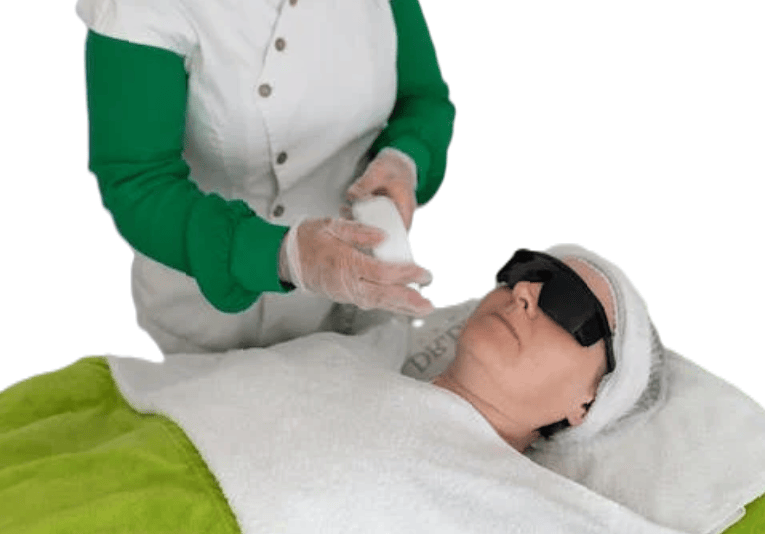The aesthetic/cosmetic industry has seen a significant evolution in recent years, with laser technology playing a pivotal role in enhancing the beauty and confidence of countless individuals. However, as the demand for aesthetic laser procedures continues to rise, so does the need for stringent safety measures. Laser safety is paramount, not only for the patients but also for the professionals performing these treatments. We will explore the essential aspects of ensuring safety in aesthetic and cosmetic laser procedures.
Understanding Laser Technology
Before beginning, it is essential to have a fundamental understanding of laser technology. Lasers, or Light Amplification by Stimulated Emission of Radiation, emit high-intensity, focused light beams. In the context of aesthetics, lasers are used to target specific skin concerns, such as unwanted hair, pigmentation, and fine lines.

Selecting the Right Equipment
When it comes to cosmetic laser safety, the choice of laser equipment is of paramount importance. Professionals must carefully select laser devices that are approved by regulatory bodies and are suitable for the specific procedure they intend to perform. Each laser type has distinct characteristics, and understanding these differences is crucial to ensuring both the effectiveness and safety of the procedure. See our Medical Aesthetic Laser Equipment buyer’s guide.
Skin Type Assessment
One of the most critical factors in aesthetic laser safety is conducting a thorough assessment of the patient’s skin type. Not all individuals are suitable candidates for laser treatments, and a comprehensive evaluation will help determine the most appropriate laser and settings for each patient. Skin type, pigment, and underlying medical conditions all play a role in this assessment.
Protective Gear and Measures
Protective gear and measures are non-negotiable components of aesthetic laser safety. Professionals must wear appropriate attire, including laser safety eyewear, to shield their eyes from potentially harmful laser radiation. Additionally, ensuring that the treatment room is equipped with adequate protective barriers and ventilation systems is essential to protect both the practitioner and the patient.
Laser Safety Eyewear:
When it comes to protecting the eyes, laser safety eyewear is the first line of defense. Exposure to the high-intensity light beams emitted by lasers can result in permanent eye damage or even blindness. Therefore, professionals must ensure that laser safety eyewear is worn during every procedure.
These specialized eyewear are designed to filter out specific wavelengths of light that the laser emits, making them an essential safeguard for the eyes. Different lasers emit light at varying wavelengths, and the eyewear must correspond to the specific laser in use. It is crucial to verify that the eyewear is compliant with regulatory standards and regularly inspected for any signs of damage or wear.

Fortunately, lasers aren’t too loud.
“Although some lasers in cosmetic surgery may be perceived as being quite loud, they remain safe. Even the loudest laser studied would have to be used for nearly 2 hours before exceeding the OSHA recommended exposure limit.”
Sound levels and safety in cosmetic laser surgery
Protective Barriers:
Aesthetic laser treatments often require the use of protective barriers, such as laser-resistant curtains and partitions, to create a safe working environment. These barriers prevent the dispersion of laser energy beyond the treatment area, minimizing the risk to anyone nearby, including the practitioner and support staff.
In addition to physical barriers, professionals should also consider the use of laser-safe signage and labels to clearly mark off laser-operational zones. This practice helps in preventing inadvertent entry of untrained or unauthorized personnel into the treatment area during laser procedures.
Adequate Ventilation:
Another essential component of protective measures is ensuring proper ventilation within the treatment room. Cosmetic laser treatments can produce smoke, fumes, and odors, depending on the procedure. Effective ventilation systems equipped with air filtration can help remove these byproducts, maintaining a clean and safe environment for both professionals and patients.
Fire Safety Measures:
Laser procedures also carry a risk of fire, particularly when dealing with specific types of lasers or when treating areas with flammable materials, such as hair. Professionals should have fire extinguishing equipment readily available and should be trained in its use. Moreover, the treatment area should be free from any potentially flammable substances, reducing the likelihood of accidents.
Emergency Response:
Aesthetic/cosmetic laser safety extends to planning for emergencies. Professionals should be well-versed in emergency protocols, including evacuation procedures and first-aid measures. Access to emergency contact information and the availability of first-aid kits within the treatment area are non-negotiable aspects of safety.
Personal Protective Equipment (PPE):
In addition to laser safety eyewear, practitioners should wear appropriate PPE to minimize the risk of exposure to laser radiation. This may include gloves, lab coats, or gowns, and head covers. The selection of PPE should align with the specific procedure and laser type, ensuring that every part of the body at risk is adequately protected.
Eye Protection for Patients:
Patients undergoing aesthetic laser procedures should also wear eye protection, typically in the form of laser-blocking goggles. This additional safety measure safeguards their eyes from any scattered laser radiation during the treatment. Professionals should ensure that patients wear these goggles throughout the procedure, further minimizing potential risks.
Standard Operating Procedures (SOPs):
Developing and implementing comprehensive Standard Operating Procedures (SOPs) is an integral part of ensuring consistent and effective protective measures. These SOPs should encompass pre-treatment checks, laser settings, patient and practitioner attire, and emergency response guidelines. When adhered to rigorously, SOPs enhance the overall safety of the aesthetic laser practice.
Patient Preparation
Patient preparation is a key aspect of ensuring safety in aesthetic laser procedures. Before the treatment, professionals must educate the patient about the procedure, potential risks, and post-treatment care. A thorough informed consent process is crucial to make sure the patient fully comprehends the procedure and its possible outcomes.
Calibration and Maintenance
Regular calibration and maintenance of laser devices are paramount for safety and effectiveness. Laser devices should be serviced according to the manufacturer’s recommendations, and any issues or deviations in performance should be promptly addressed. Keeping the equipment in optimal condition minimizes the risk of adverse events during treatments.
Skin Cooling and Anesthesia
To enhance the comfort and safety of aesthetic laser procedures, skin cooling and anesthesia can be used. Cooling devices help protect the epidermis and reduce the risk of adverse reactions, while anesthesia options can minimize discomfort during treatment. However, these measures should be used judiciously and tailored to the individual patient’s needs.
Proper Technique
The technique employed during an aesthetic laser procedure can significantly impact its safety and efficacy. Professionals must receive thorough training on the specific laser device they use and should adhere to recommended treatment protocols. Precision in laser application is crucial to achieving desired results while avoiding adverse effects.
Monitoring for Adverse Events
Aesthetic laser safety extends beyond the treatment room. Post-treatment, it is essential to monitor patients for any adverse events. Patients should be provided with clear instructions on post-treatment care and informed about the potential side effects they may experience. Timely recognition and management of adverse events are critical to ensure patient well-being.
Continual Education and Training
The field of aesthetic laser technology is continuously evolving. Professionals must commit to ongoing education and training to stay updated with the latest advancements and safety measures. This ensures that they can provide the best and safest treatments for their patients.
Summing Up
Aesthetic laser procedures have revolutionized the beauty industry, offering individuals the opportunity to enhance their appearance with remarkable precision. However, the paramount concern is safety, not only for the patients seeking these treatments but also for the professionals who administer them. The responsibility of ensuring aesthetic laser safety falls on the shoulders of the practitioners, who must prioritize proper equipment selection, patient assessment, protective measures, and ongoing education.
By adhering to the guidelines outlined in this comprehensive guide, professionals can confidently provide aesthetic laser treatments that are both effective and safe, offering their patients the opportunity to embrace their desired aesthetic transformations with minimal risk. In the ever-evolving field of cosmetic laser technology, safety must remain at the forefront of every professional’s practice, preserving the integrity of the industry and the well-being of those who seek its services.
Laser Safety References
Laser Management and Safety in Dermatology